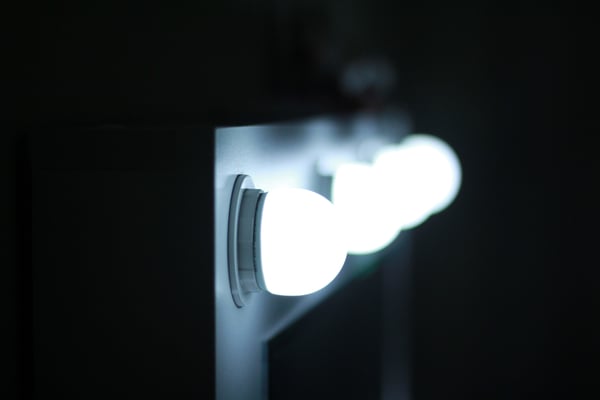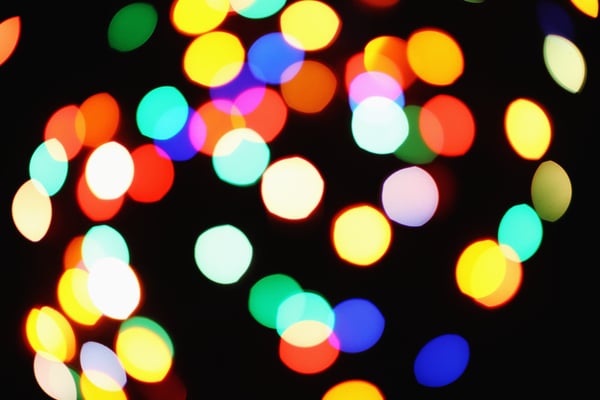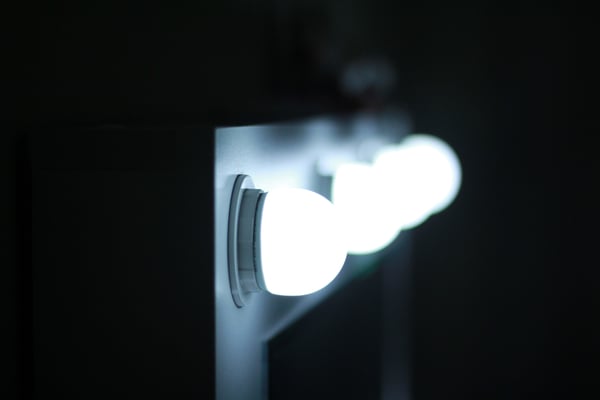photo by Val Toch on Remove Splash
Since Edison's light bulb, there have been many innovations to make home lighting practical, affordable, and efficient. The famous inventor promised the world: “We will make electricity so cheap that only the rich will light candles.” With LEDs we substantially reduce the cost of lighting buildings, compared to older traditional lamps.
Get a professional LED lighting design and reduce your energy bills.
Still, energy use represents a large portion of the average household budget, estimated at around $230 billion per year. That's why switching to energy-efficient LED bulbs is a great way to reduce lighting energy consumption and greenhouse gas emissions, while improving comfort.
Compared to traditional lighting, LEDs stand out for a multitude of benefits:
- LED lighting achieves energy savings of 30% to 90%.
- LED bulbs operate at a much lower temperature, reducing the risk of burns if touched.
- Maintenance free and easy to install.
- Providing better quality of lighting and visibility.
- Great design flexibility.
- Smart connectivity features.
- Lasting for many years (even decades).
…And the list goes on. In this article, we'll walk you through the top reasons to consider an LED lighting upgrade if you own or manage a property.
1) LED lighting offers excellent energy efficiency and cost-saving potential
The number one benefit of LEDs is their energy efficiency.
After replacing old incandescent, halogen, or fluorescent ( CFL ) bulbs with LED lighting, expect energy savings of 30% to 90%.
According to Cnet. com you should worry about lumens and not watts when dealing with LEDs:
| LUMENS | INCANDESCENT WATAGE | LED Power |
| 2,600lm | 150W | 25-28W |
| 1,600lm | 100W | 16-20W |
| 1,100lm | 75W | 9-13W |
| 800lm | 60W | 8-12W |
| 450lm | 40W | 6-9W |
London-based and NICEIC-certified Handyman Fantastic electricians explain what's behind this energy-saving potential :
- Thanks to technological innovation, today's LEDs generate light with minimal voltage, have no warm-up time and use minimal electrical current to light up. On the other hand, their incandescent ancestors converted 90% of the energy into heat and only 10% into light . This is essentially wasted energy and money down the drain.
- Unlike old light bulbs that spread light in all directions, LEDs emit light in a specific direction because every particle of light is important. Furthermore, directional light emission turns LEDs into a versatile source with multiple applications. Some examples are task lighting, downlights, spotlights, accent lighting for your home or office decor, and more.
- For a given wattage, LEDs emit 5 to 10 times more illumination than traditional types of lighting. So when comparing brightness, forget about watts. In fact, modern LED technology has changed the way lighting products are labeled, emphasizing true light output in lumens. The bottom line is: the higher the number of lumens per watt, the more efficient the bulb.
- When you invest in ENERGY STAR certified LED products, it can improve your building's energy grade and make you eligible for government-backed rebates. Lighting rebate programs involve requirements and some paperwork, but they contribute to a positive impact on the ROI of your next project.
At first glance, it appears that LEDs are an expensive choice. No more.

photo by max malax about Remove splash
While LED bulbs cost an arm and a leg a few years ago (>$100 per bulb), you can now buy energy-efficient bulbs for less than $5 each.
When we think about the benefits, the initial costs seem higher, but LEDs are a long-term investment. Consider the table below to get an idea of how much you pay over the life of a bulb:
| Comparison | Incandescent | LFC | LED |
| Lamp retail cost | ~$1.00 | ~$2.00 | ~$5.00 or less |
| Power | 60 watts | 14 watts | 7 watts |
| Average useful life | 1,250 hours | 8,000 hours | 25,000 hours |
| Electricity cost per year (13.2¢/kWh) | ~$8.67 | ~$2.02 | ~$1.01 |
| Lifespan (when used 3 hours/day, 7 days a week) | ~1 year 1 month 21 days | ~7 years 3 months 20 days | ~22 years 9 months 30 days |
| Number of replacement times for 25,000 hours | ~20 times | ~3 times | – |
| Estimated total costs over 25,000h | ~$219 | ~$54 | ~$28 |
| ROI when you buy LEDs | ~$191 | ~$26 | – |
2) LED bulbs mean longevity
LED sources are prominent because they are long-lasting. High-end LED bulbs are solid-state devices that last more than 10 years. The longer lifespan also has a positive impact on the environment as fewer lamps and luminaires end up as waste.
Unlike traditional lighting sources that fail under extreme conditions, LED fixtures can be built to withstand vibrations, wind, rain, drops, shocks and even sub-zero temperatures. The reason behind its longevity is its robust design and durability. LEDs also have heat diffusers and precise electronic power supplies (drivers), which prevent overheating problems.
Lamp life depends on product quality and operating schedules. However, for similar applications, LEDs last much longer than older types of lighting. The following table summarizes the average longevity of different types of lamps:
| LIGHT SOURCE TYPE | AVERAGE LIFE (HOURS) |
| Incandescent lamp | 1,000 – 2,500 |
| Compact fluorescent lamps | 6,000 – 15,000 |
| Led lamps | 25,000 – 50,000 (even more) |
3) LEDs require minimal maintenance

photo by Dmitri Yakovlev on Remove Splash
A longer lifespan means less hassle buying and changing bulbs.
Incandescent bulbs are about 90% less efficient than LED bulbs, but their lifespan is also 20 times shorter. This means you will have to replace many of them to reach the lifespan of a single LED. In short, the result is high maintenance costs.
On the other hand, modern LEDs do not “burn out” or fail unexpectedly. They only lose their shine over time.
But then, what to expect at the end of life?
The answer: faded light.
Typically, when the light output of an LED bulb drops by about 30%, this will give you a clear signal that it's time to install a new one.
4) LEDs are easy and safe to install
Previously, the number one challenge for using LED lighting was the installation process.
The wiring procedure for some older lamp types is complex. For example, HID and fluorescent lamps require a ballast to regulate the power supply. In these cases, specialized help from an electrician is required to carry out the wiring.
Fortunately, today it is easier to install LED lights. Don't worry if you want to fit them into traditional lamp sockets. LEDs are available in versions compatible with all main voltage systems, so a transformer is not required for LED lighting to work properly.
Unlike traditional light bulbs, most LEDs operate at low temperatures, reducing the risk of burns or starting a fire in your home or office.
This makes LED lighting much safer to install and use. Some LEDs are designed to use the same power supplies and sockets as older bulb types, and you can change them yourself. However, don't approach the situation blindly – consider the benefits of working with a certified electrician to prevent any accidents and keep you out of harm's way.
5) Many LED lights are dimmable
If you are unable to dim your lighting system, you will lose comfort and energy. Dimmers allow you to adjust lights below 100% output. The lower the percentage, the greater your savings. With the exception of incandescent bulbs, most types of traditional bulbs cannot be dimmed.
Even though incandescent bulbs are suitable for dimming, they are still inefficient. LEDs allow you to adjust brightness while consuming 80% less energy than incandescent bulbs.
The daylight harvesting concept is very promising: sensors are used to measure the amount of available daylight and the LEDs are dimmed accordingly. This way, they only work at full brightness when there is no natural light available.
6) LEDs focus on light quality
If you can't tell the difference between white and gray objects at night, the main culprit could be your current light bulbs. The truth is that light bulbs are not designed to provide the full spectrum of visible light. With ever-improving technology, LEDs reproduce colors better than their predecessors, helping you distinguish the color of objects while saving energy.
However, do not assume that all LED products have high lighting quality. Lamps with certifications such as ENERGY STAR have been carefully tested under laboratory conditions. However, there are also low-quality products on the market and you should avoid them.
If you are a home or business owner looking for high-quality visual perception, check the color rendering index ( CRI ) on the lamp packaging. As the CRI increases, the lighting quality improves.
| TYPE OF LIGHTING | CRI RANGE | OBSERVATION |
| Incandescent | 95 – 100 | Perfect ability to render colors. The IRC decreases with increasing temperature. |
| Compact fluorescent lamps | >50 | Fair rendering qualities. It's not as good as incandescent or LED lighting. |
| Led lamps | 65 – 98 | Excellent CRI rating if you purchase quality LED products. |
Incandescent lamps offer high quality lighting, but the price to pay is low energy efficiency. An incandescent bulb consumes as much energy as 5 or 6 LED bulbs of equal brightness.
7) LEDs as a SMART choice
Forgot to turn off the lights when you were in a rush? You are not alone and smart LED bulbs can help you. Many LEDs are compatible with smart home systems, which optimize electricity use and turn off appliances when no one is home. Smart LEDs are perfect for tech-savvy users.
Additionally, Smart LEDs offer a wide range of applications, great customization and energy conservation to solve problems that traditional systems cannot:
- With an ENERGY STAR certified smart light bulb, you can use up to 90% less energy than with old light fixtures.
- You can light up spaces with just a tap on a smartphone or tablet, or even with your voice and a wireless connection. This way you can manage your home lighting anywhere and anytime.
- With smart sensors and automatic controls, you can set the light to change tone and brightness automatically. You can transform your home into dreamland using a color-changing LED bulb.
- Smart sensor systems, both in the building and in the lighting units themselves, can perform real-time diagnostics to maintain efficiency.
A helpful note: Unlike standard artificial light sources, certain LEDs can pose a problem for good sleep. According to Sleep Studies, LEDs that produce blue light can affect attention, reflexes, and overall mood. For this reason, LED lamps with warm yellow tones are recommended for bedrooms and hotel rooms.
Conclusion
If you're considering a lighting upgrade project, LEDs offer many benefits over older bulb types. LED lighting is energy-efficient, long-lasting and compatible with mobile devices and smart home systems. To ensure the highest efficiency and safe operation, it is always best to seek professional advice for electrical installations .

